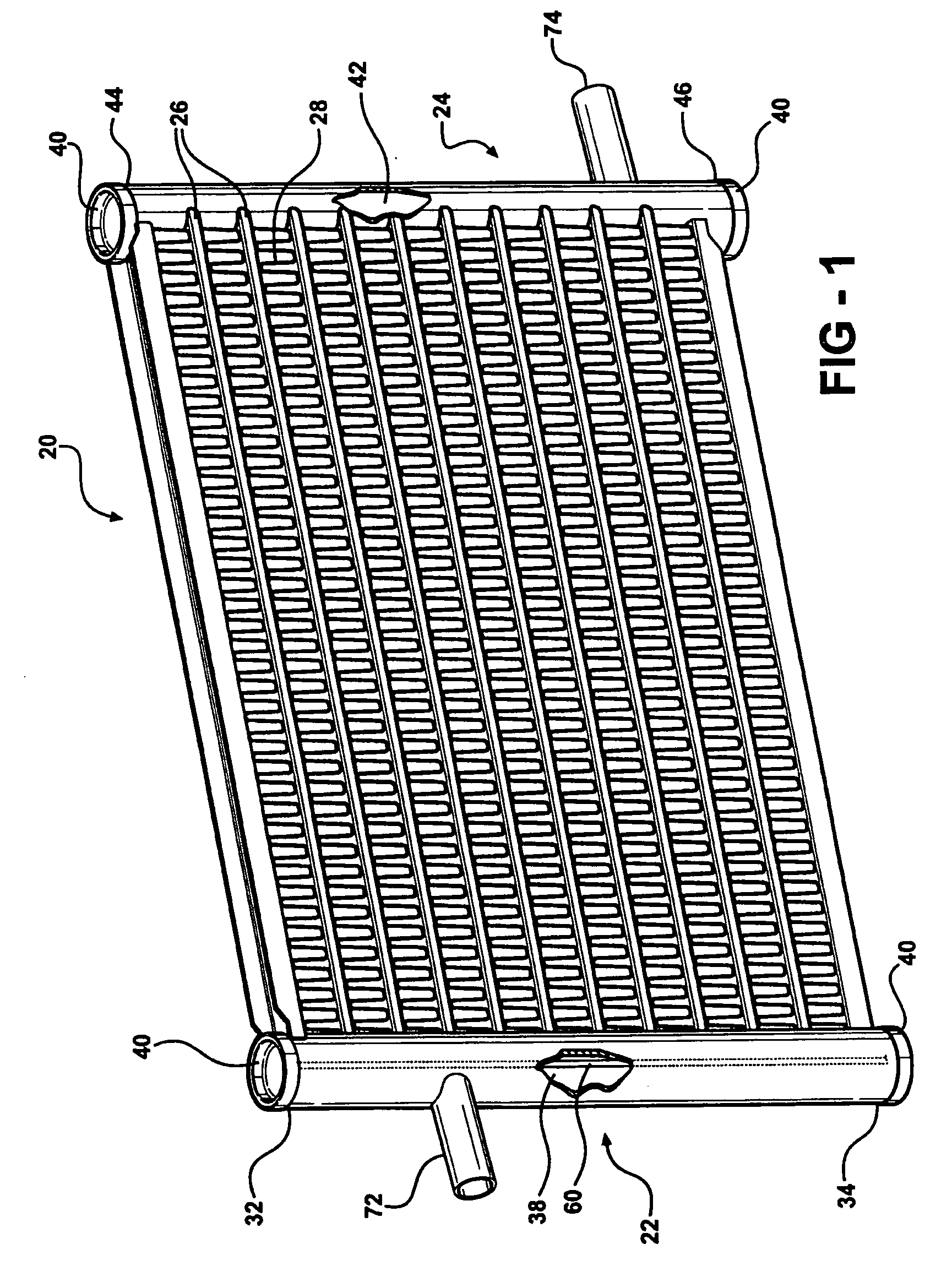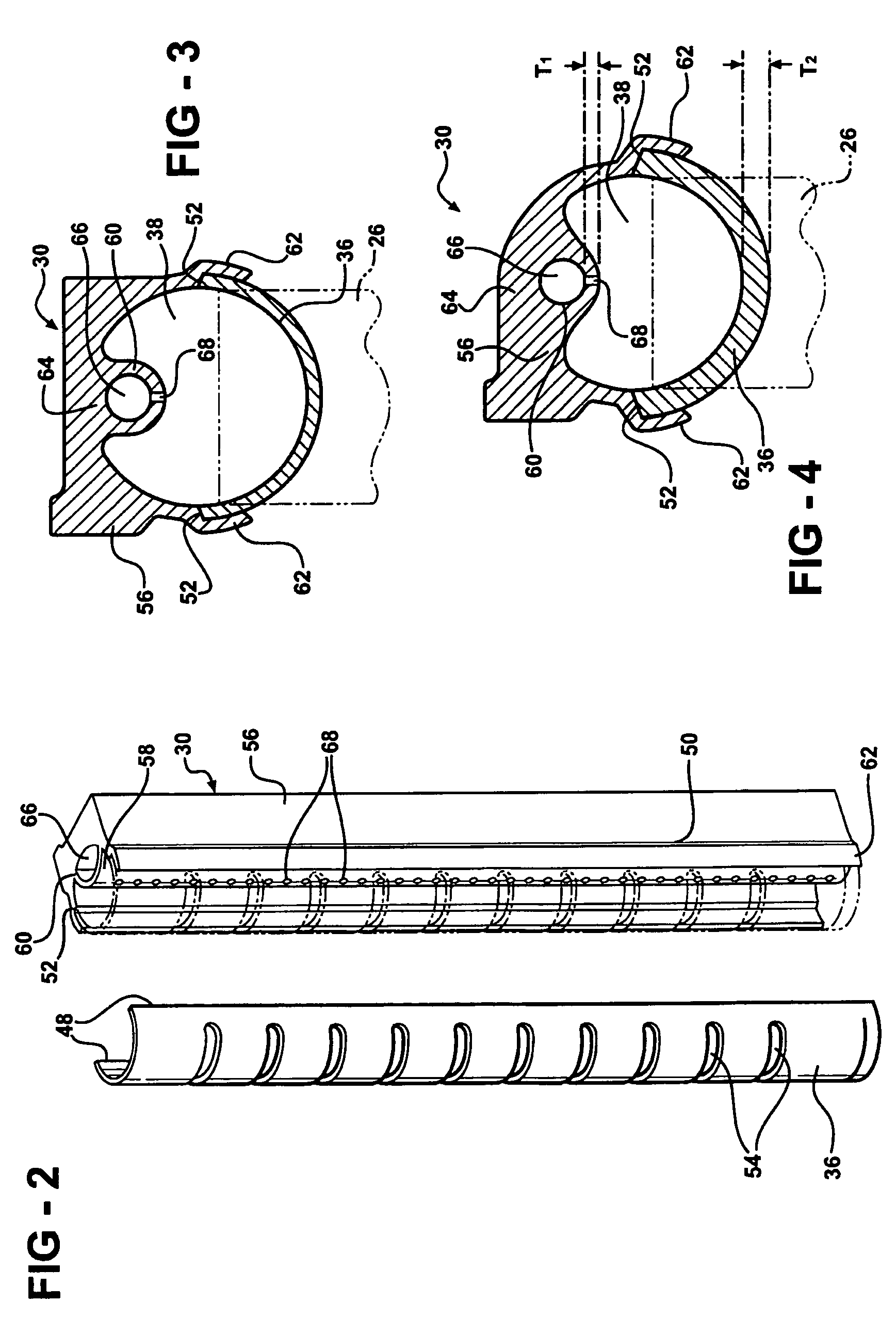Heat exchanger assembly
a technology of heat exchangers and components, applied in refrigeration and liquidation, lighting and heating apparatus, refrigeration machines, etc., can solve the problems of reducing the overall heat exchange performance of the evaporator, affecting the efficiency of the evaporator, and the proportion of the heat exchanger, so as to reduce the complexity of the assembly, reduce the cost, and the effect of tremendous flexibility
- Summary
- Abstract
- Description
- Claims
- Application Information
AI Technical Summary
Benefits of technology
Problems solved by technology
Method used
Image
Examples
Embodiment Construction
[0031]Referring to the Figures, wherein like numerals indicate corresponding parts throughout the several views, a heat exchanger assembly is generally shown at 20 in FIG. 1. The heat exchanger assembly 20 includes a first manifold 22, a second manifold 24, and a plurality of flow tubes 26 fluidly connecting the manifolds 22, 24. A plurality of heat conducting structures are disposed between the plurality of flow tubes 26, which are illustrated as fins 28. As is known to those skilled in the art, the first manifold 22 may be commonly referred to as an inlet manifold, therefore performing an inlet function, and the second manifold 24 may be commonly referred to as an outlet manifold, therefore performing an outlet function, however, the opposite could be true. Reference to the first and second manifolds 22, 24 is interchangeable in the description of the subject invention.
[0032]The first manifold 22 includes a tank 30 having a length, a first end 32 and a second end 34, and a header ...
PUM
 Login to View More
Login to View More Abstract
Description
Claims
Application Information
 Login to View More
Login to View More - R&D
- Intellectual Property
- Life Sciences
- Materials
- Tech Scout
- Unparalleled Data Quality
- Higher Quality Content
- 60% Fewer Hallucinations
Browse by: Latest US Patents, China's latest patents, Technical Efficacy Thesaurus, Application Domain, Technology Topic, Popular Technical Reports.
© 2025 PatSnap. All rights reserved.Legal|Privacy policy|Modern Slavery Act Transparency Statement|Sitemap|About US| Contact US: help@patsnap.com



